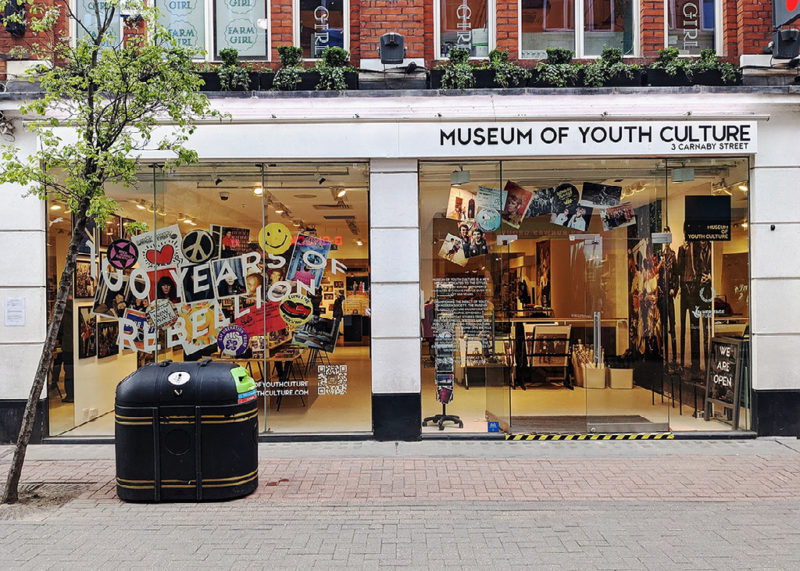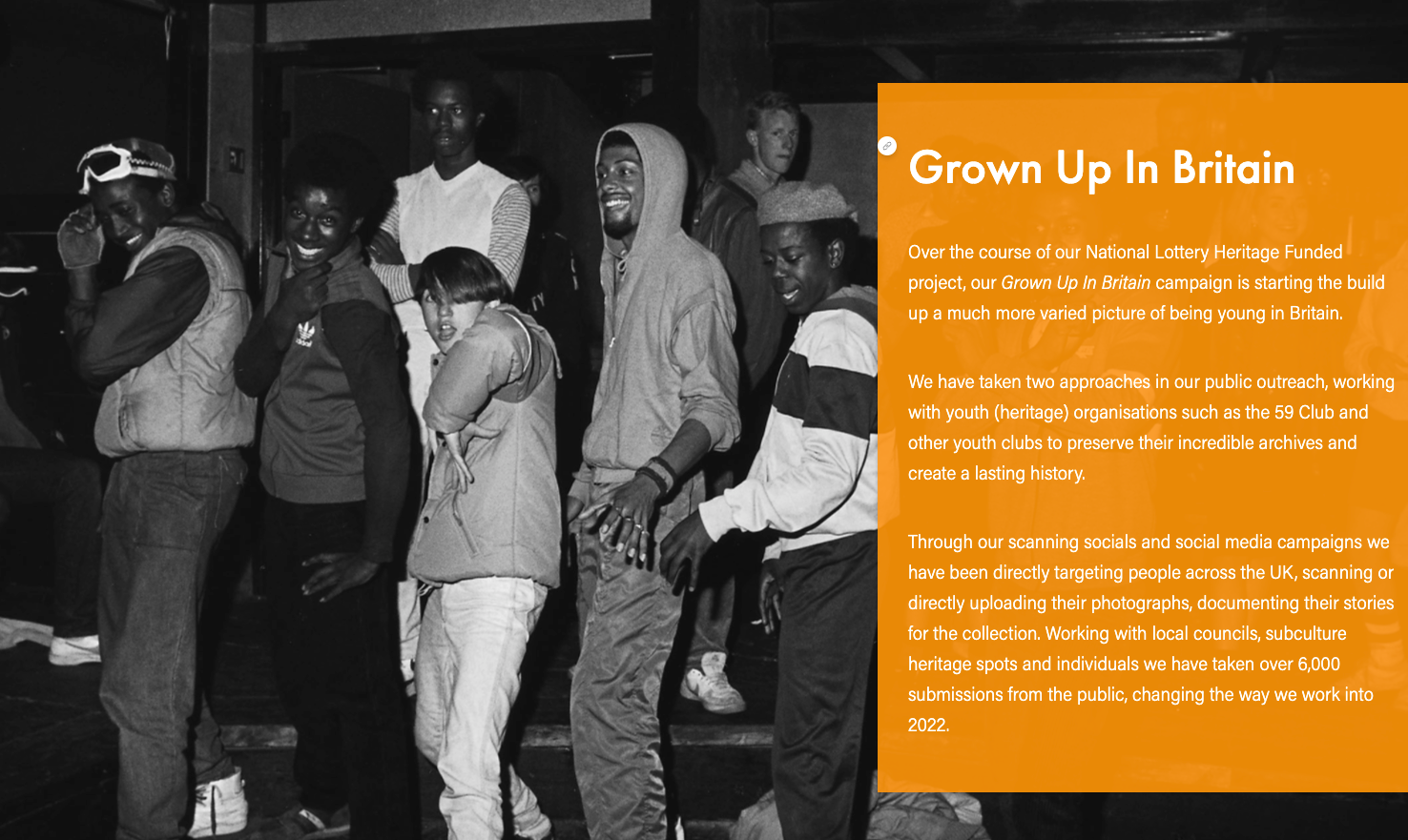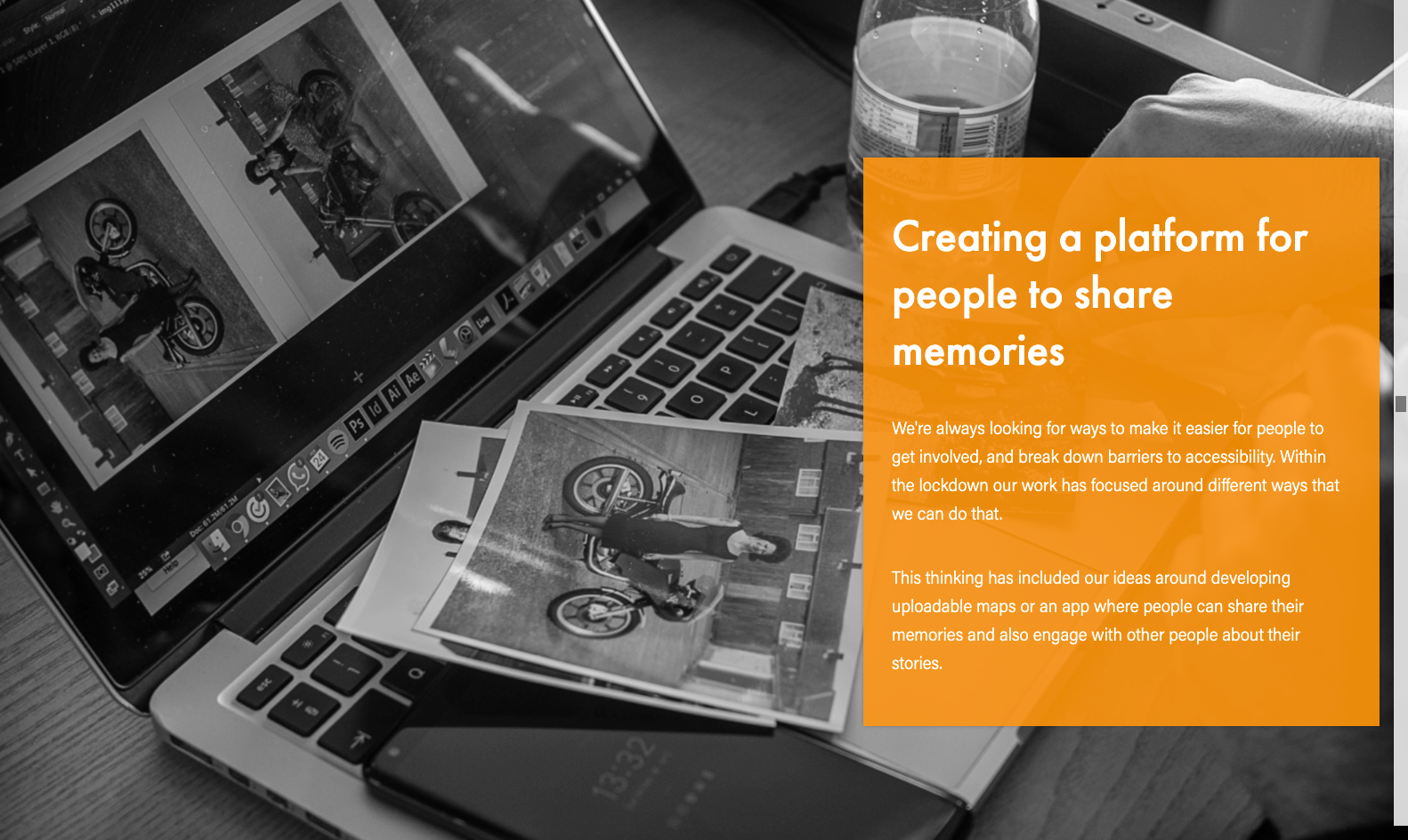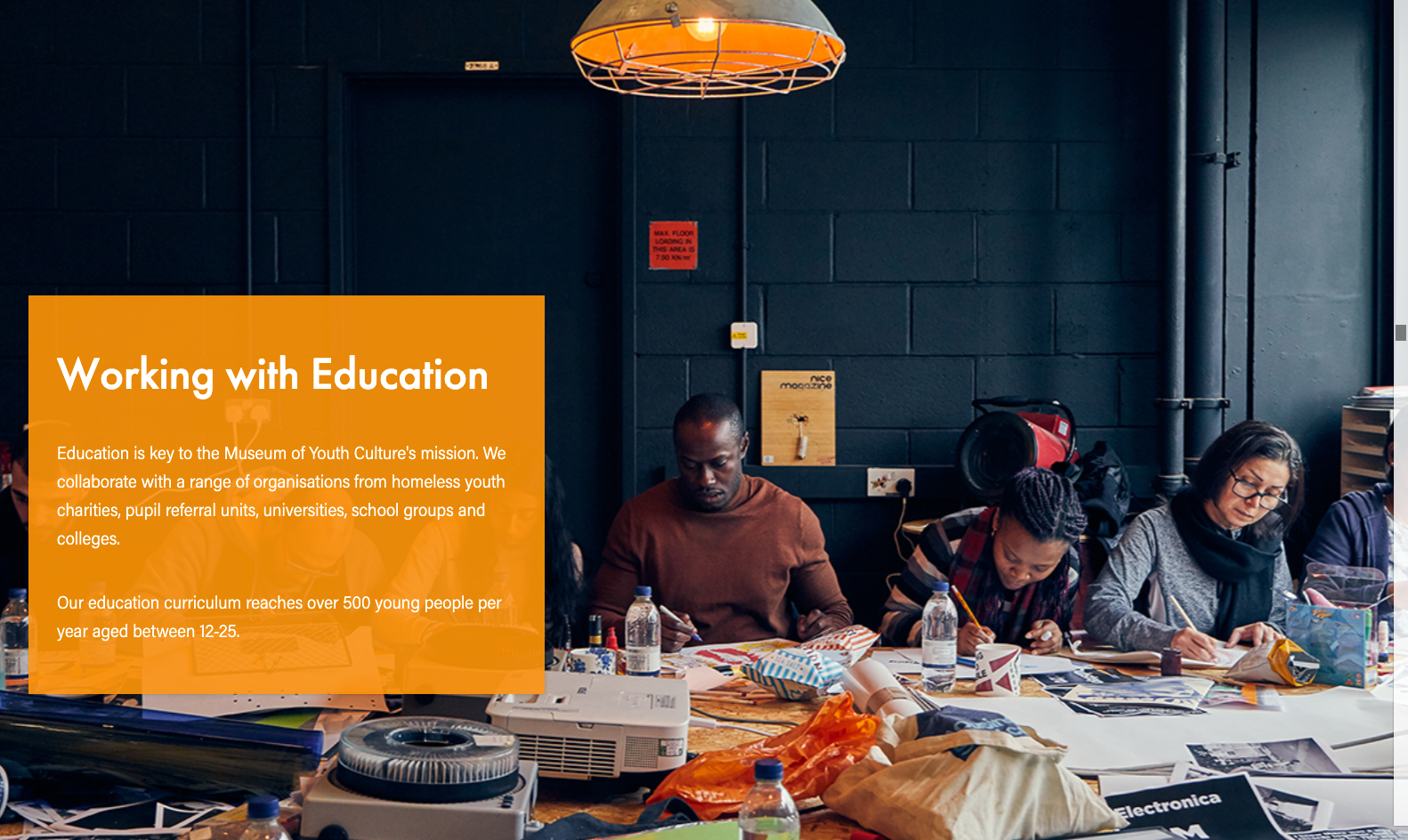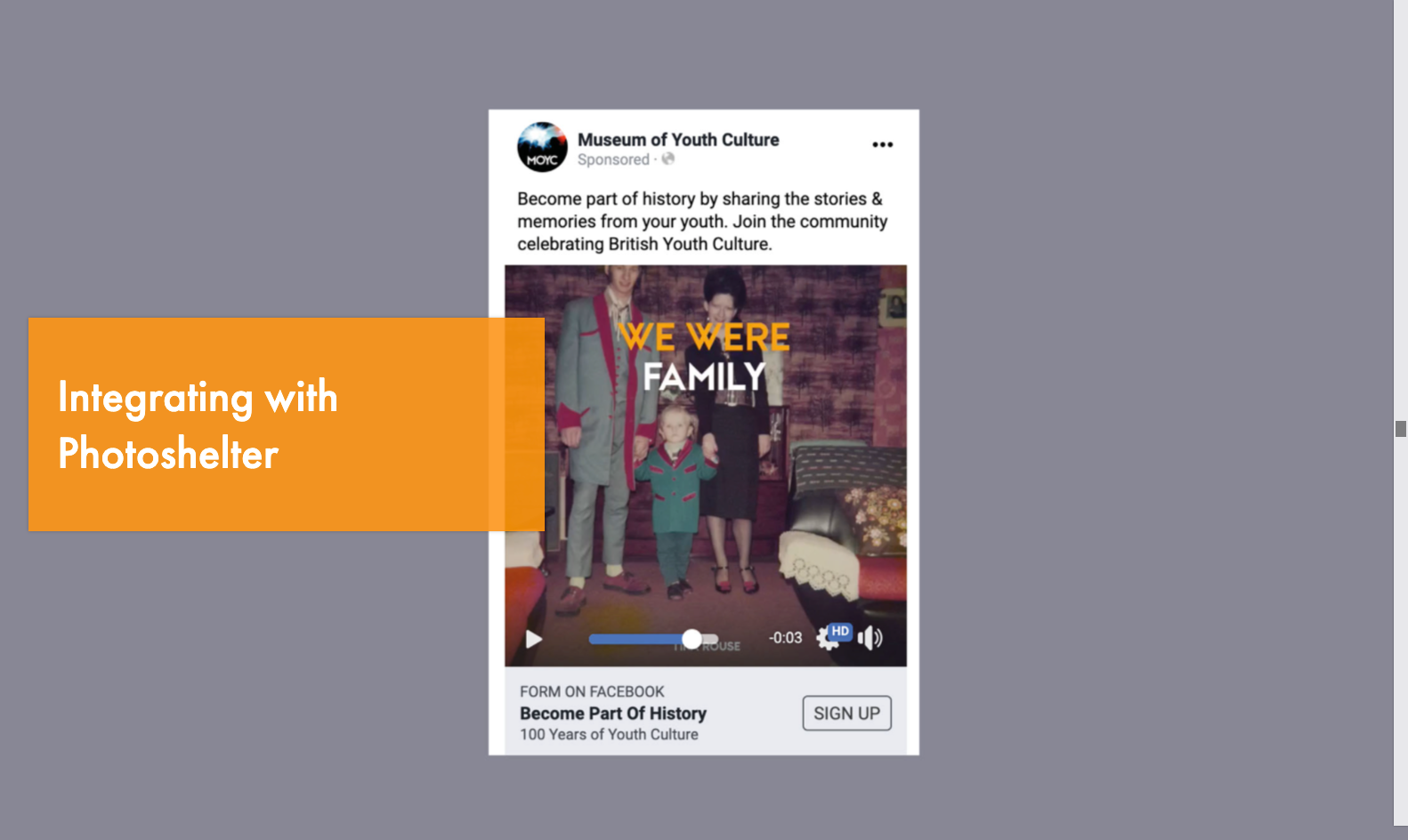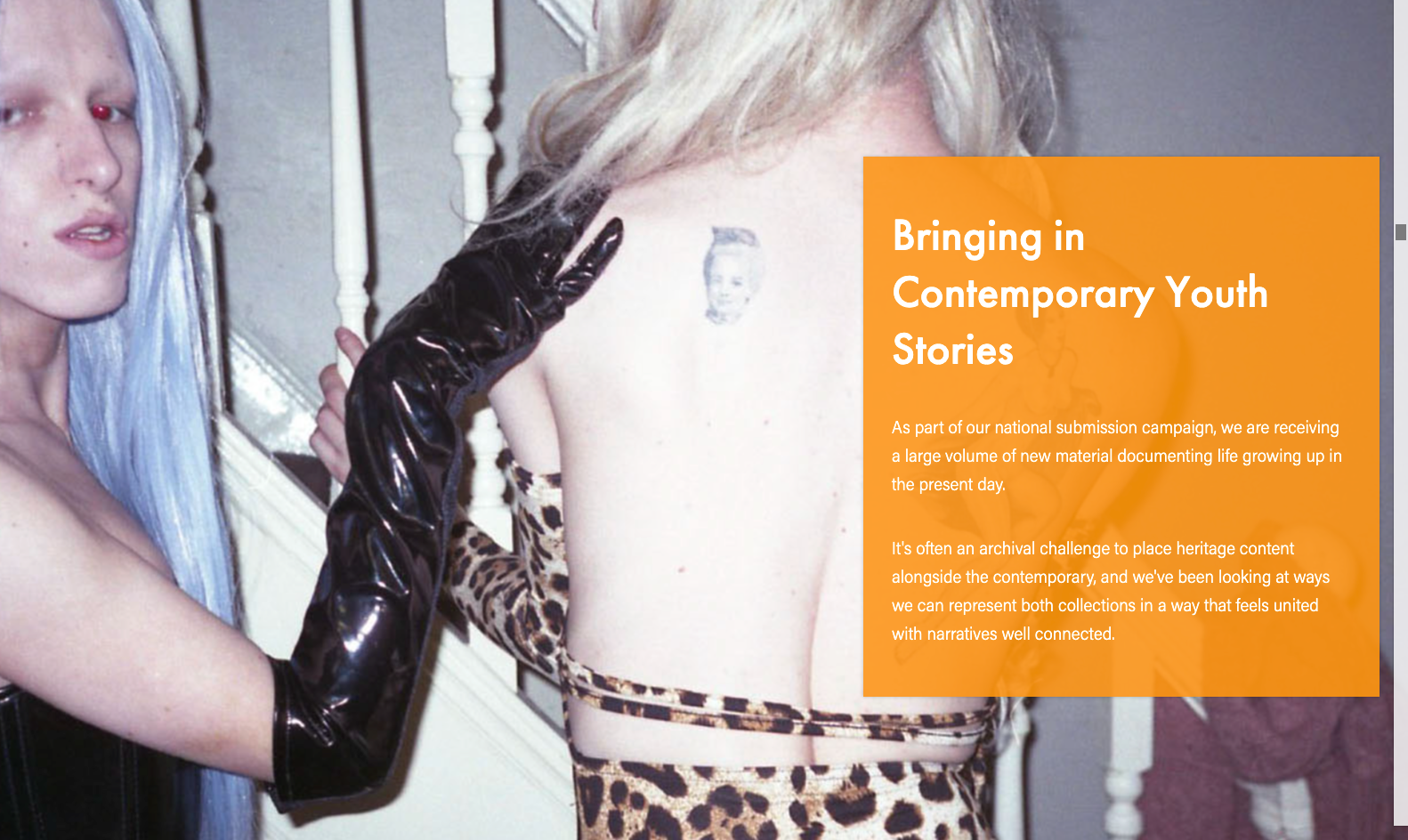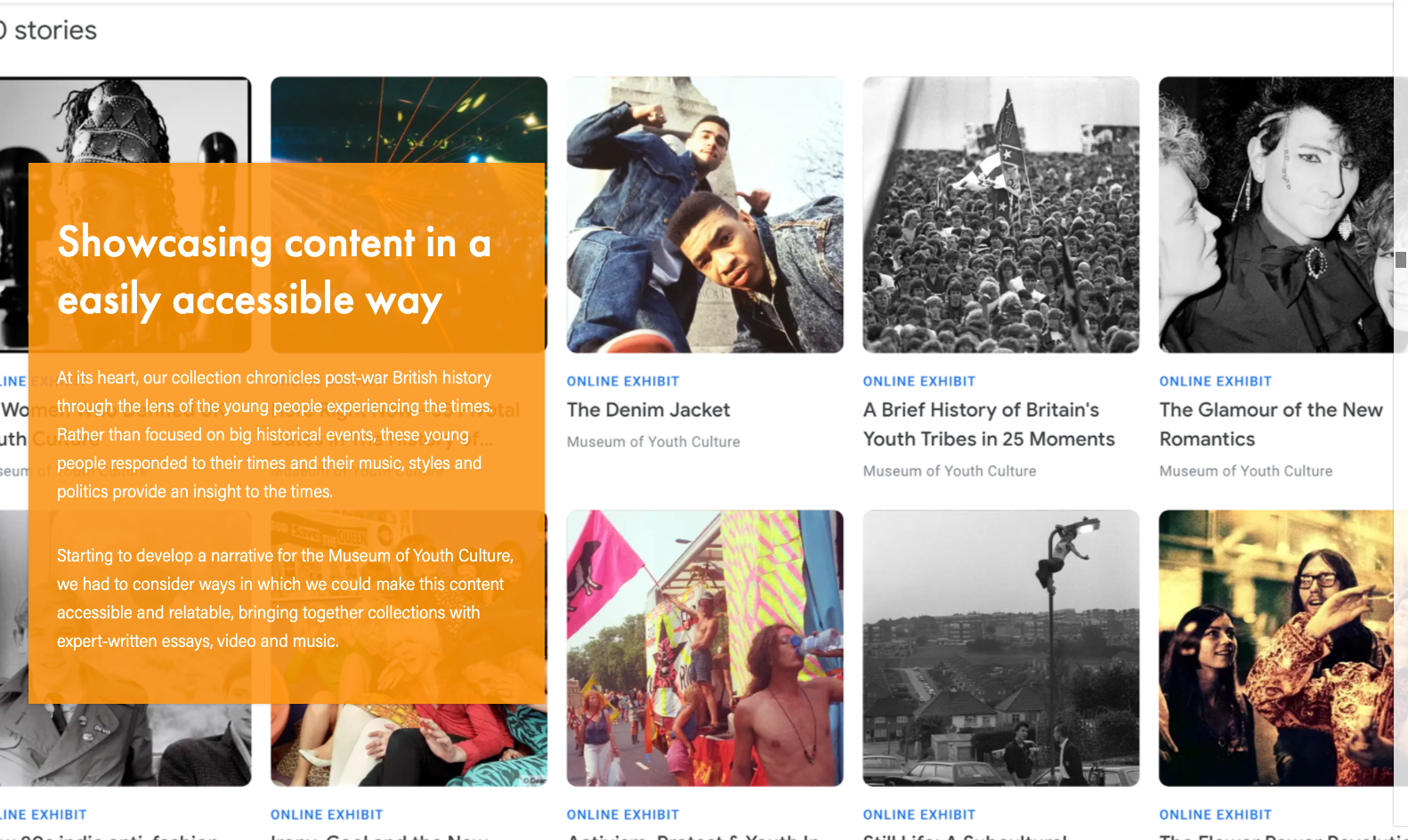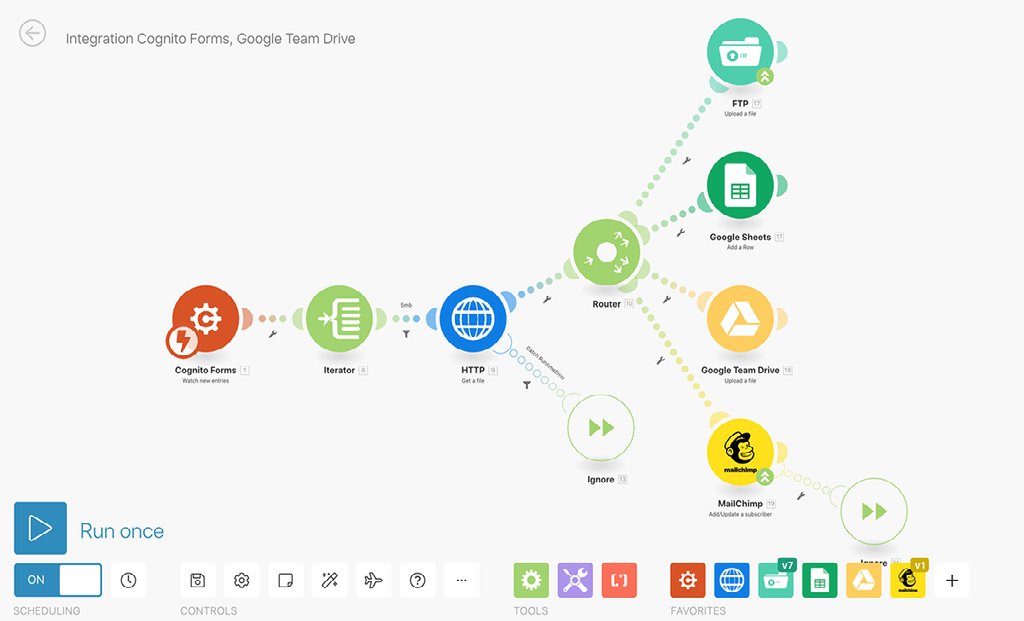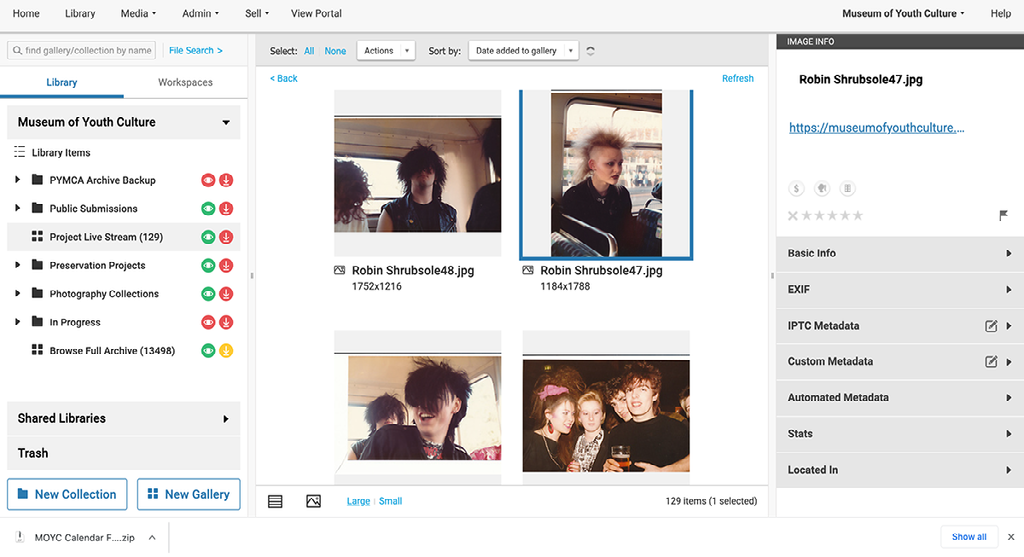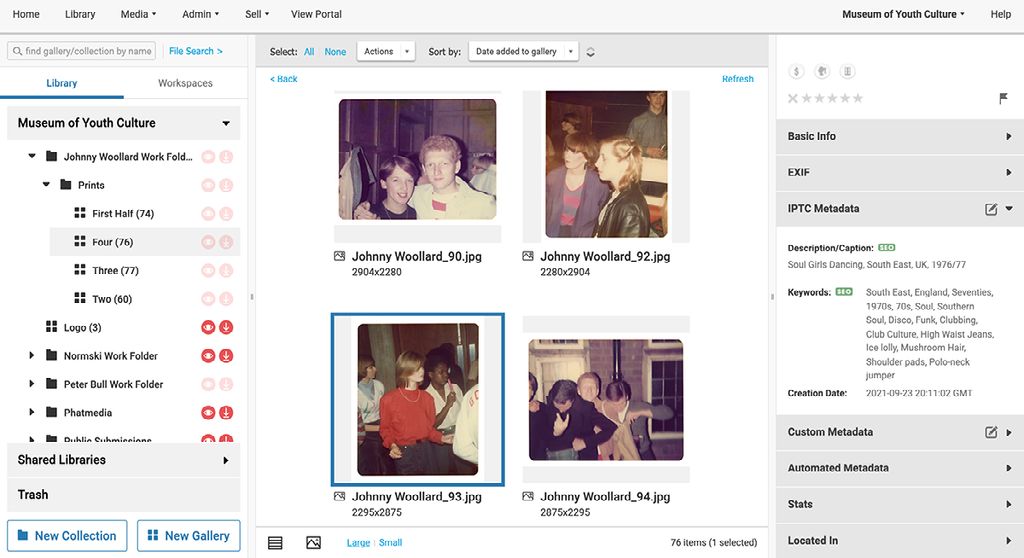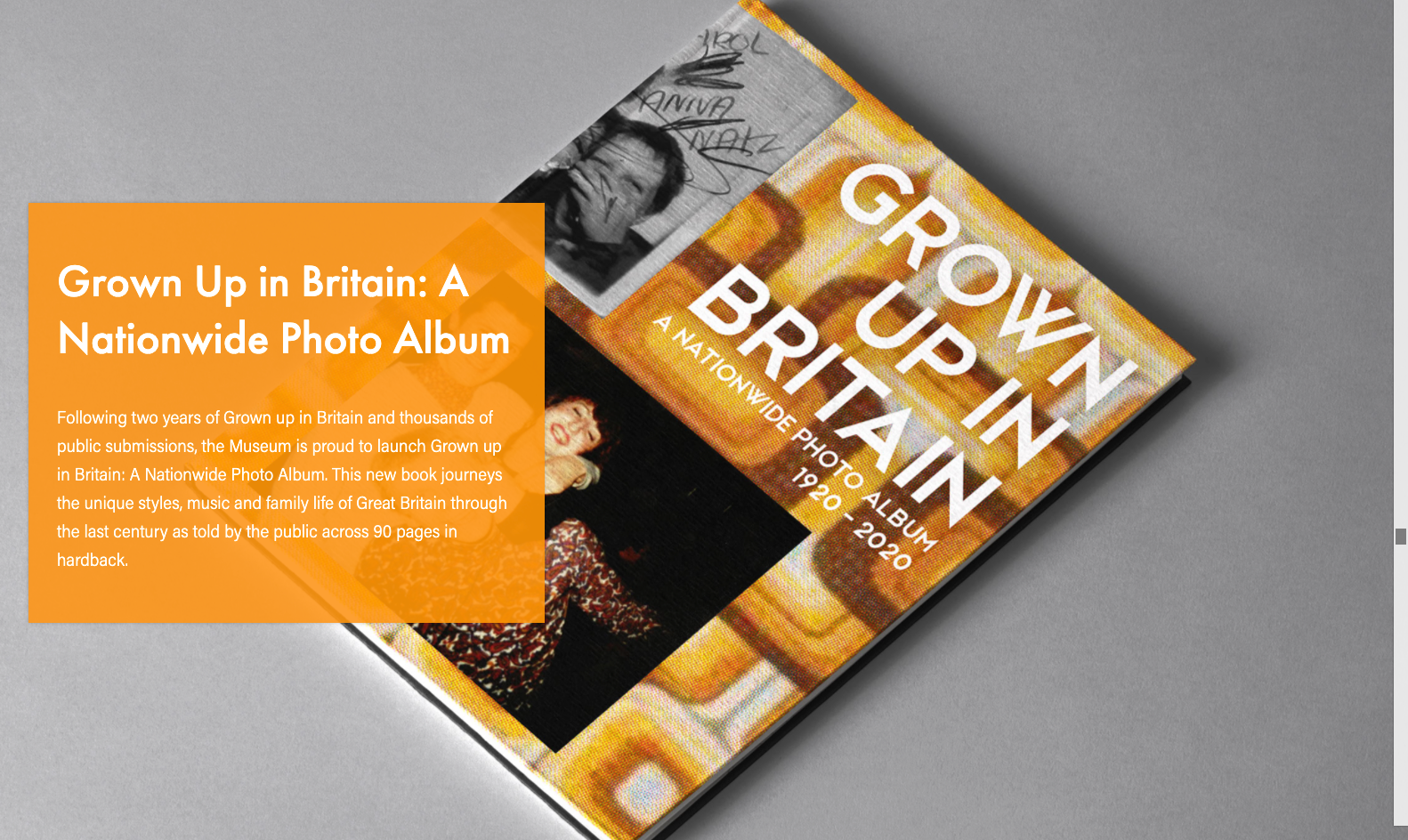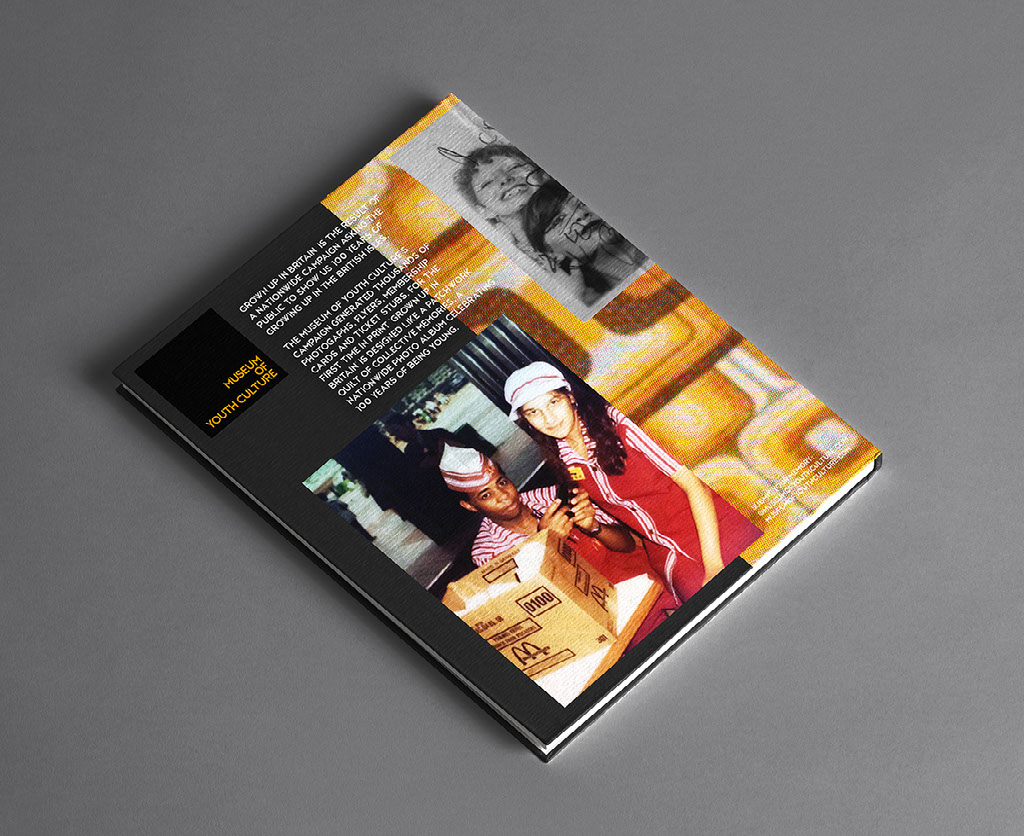Do you remember when you felt belonging for the first time: Was it in the warmth of a team huddle, while jamming on guitar in a garage, or on a road trip with friends?
No matter what your coming-of-age story is, if you documented candid moments from growing up on film, in scrapbooks, or private journals, you get it: memorabilia from your formative years must be protected at all costs because they’re clues for future-you about who you were becoming.
Our childhood keepsakes aren’t just blue pills back to our glory years; they also reflect how the nascent energy of young people influence and impact society over time.
That’s precisely the founding and current mission of The Museum of Youth Culture: To celebrate the scenes, sights, and sounds of the United Kingdom’s youth culture over the past 100 years.
To learn more about the creative strategy and tactical decisions that transformed this anthropological project into a revolutionary, democratized museum experience, we sat down with Jamie Brett The Museum of Youth Culture‘s Creative Projects Lead to map out the institution’s past, present, and future trajectory.
Read through the journey of The Museum of Youth Culture’s radical, ongoing development below first or watch the full hour-long discussion on-demand here:
From Magazine to Museum
From influencing fashion and packaging designs to nurturing revolutionary leaders like Paul Stephenson or The Sex Pistols, the UK’s postwar society has been heavily shaped and influenced by youth culture.
Someone had to preserve their contributions to society and that person was Jon Swinstead. Redressing the negative reputation towards youth subcultures became his professional mission over 30 years ago.
Sleazenation was one of many magazine publications Jon worked on in the late ‘90s, but its popularity rose quickly because of the bold way it critiqued the politics of the day and documented youth culture’s impact on nightlife. Plus, it visually and viscerally showed how they all clashed.
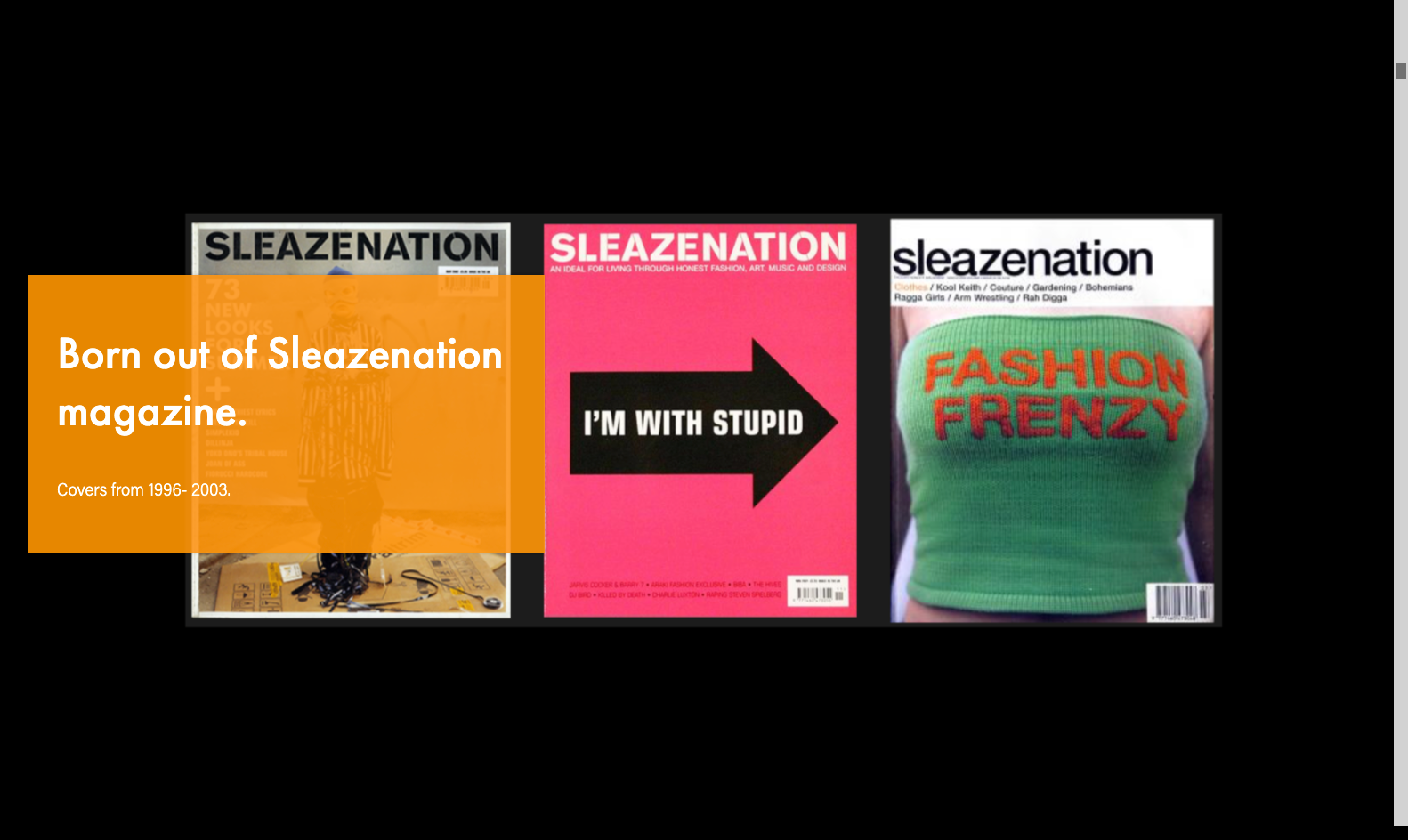
Eventually Jon and his team of interns and volunteers amassed a massive archive of unfettered professionally shot glimpses into youth subculture scenes like the ravers, the motos, the punks, the soulies, the goths and they knew they had to push it even further.
Jamie explained, “Jon was really keen to bring in images that showed what young people have been doing without real censorship, without any sort of control or without diluting the reality of what it’s like growing up in Britain in particular, so this archive Photographic Youth Music Culture Archive (PYMCA) was formed,” Jamie shared.
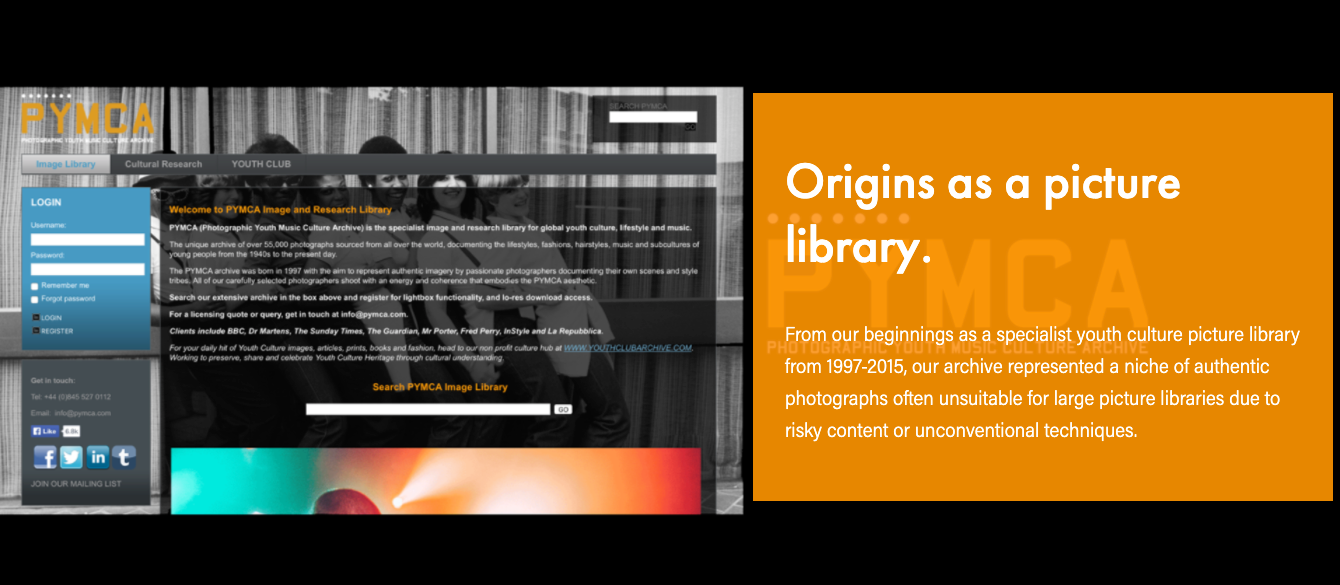
Between team outreach and incoming inquiries from photographers, the PYMCA team developed an even larger archive of hundreds of thousands of photographs. These precious slides are now stored in small, non-temperature controlled office in the iconic Printworks London— a 5,000-person capacity nightclub. A rare gem within a gem that must be protected.
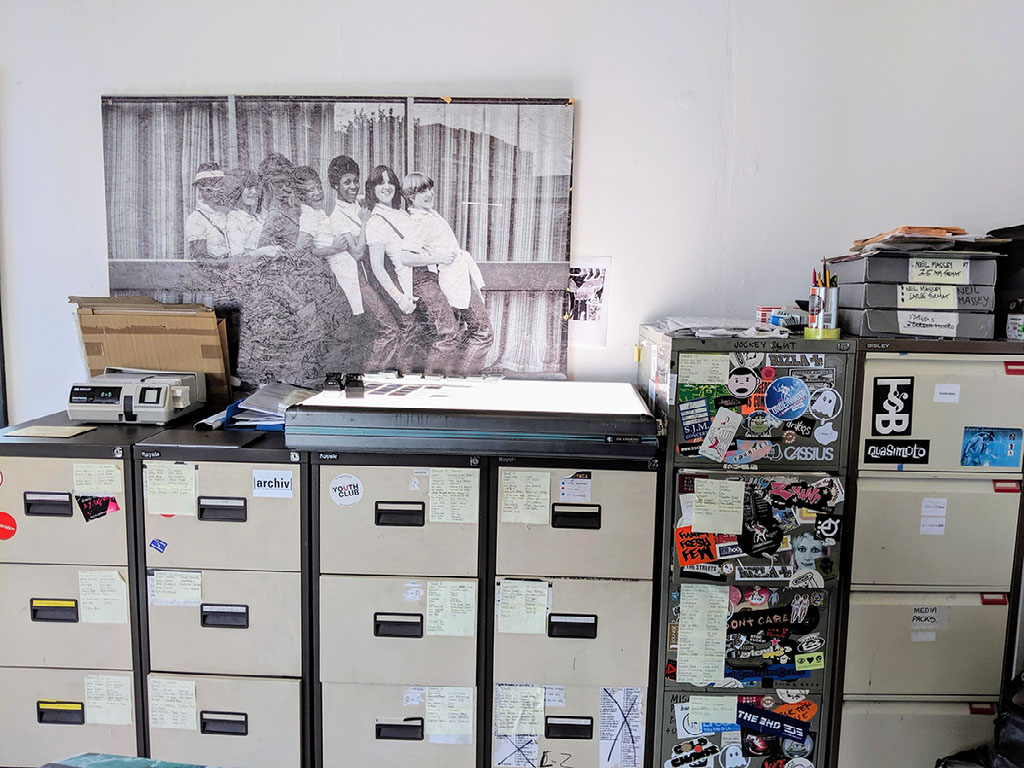
Though the intial intent for the archive wasn’t to license images to acclaimed publications or cultural organizations, it paid the bills. The PYMCA team quickly realized their value and at first, began digitally archiving their precious assets through an old school image library software that felt ‘very 1990s.’
Jamie said, “There are hundreds of 1000’s of slides within those [cabinets] and not all of them have been scanned, but they’re constantly in the process of being digitized and then being preserved into PhotoShelter, so PhotoShelter has a really key role in the preservation of youth culture history; we obviously back them up physically, but it [PhotoShelter] is our online backup for this incredible story that’s been going on over the last 100 years.”
That was when Jamie joined the team as an intern and for the past nine years he’s been working to support, grow, and evolve the purpose, partnerships, and process of evolving the archive into a museum and much more!

What began in 1997 as a passion project to build a photo archive exploring interesting youth subcultures has transformed into a nonprofit organization funded by the National Lottery Heritage Fund called YOUTH CLUB.
Their mission? To ‘preserve, share, educate and celebrate youth culture history through a passionate network of photographers and creatives,’ and The Museum of Youth Culture is their latest non-traditional effort to democratize the art industry.
“The whole idea for this collection is that it’s a permanent space that’s dedicated to the sounds, scenes, and the styles that have been forged by young people.
Jamie Brett, The Museum of Youth Culture Creative Projects Lead
Jamie explained, “We are funded as a heritage collection that is purely about preserving these youth cultures histories, which is still unrecognized and undesignated heritage in the UK anyway, whereas you might have a Roman mosaic or a church steeple, we’re actually looking at the scenes, the clothing, the music, and the energy that young people have forged and the culture that has come from that.”
Democratizing the Art Industry for All
So, how did this emerging museum survive and thrive despite such a grim outlook of survival for small cultural institutions during the pandemic?
The Museum of Youth Culture team was in a unique position — they didn’t officially open a permanent space yet, so they weren’t wasting funding on rent.
Then a global pandemic hit and the team’s strategic focus pivoted quickly to stay aligned with their organization’s main objectives:
- Fundraising to open the museum (now, in 2025) and to continue supporting digitization of the archive
- Growing and diversifying the archive
- Building socially distant experiences for people to interact with the rich collection of youth culture photography and ephemera
Grown Up In Britain: A Campaign, A Book, A Movement
Just before the pandemic hit in the fall of 2019, The Museum of Youth Culture team launched a multi-faceted marketing campaign called ‘Grown Up in Britain’ encouraging people from all walks of life to contribute photos to their already massive professional photography archive.
At first, the team voraciously combed social media for events hosted by subculture or local town pride groups. They’d pop up everywhere from small towns to large squares across the UK where people could walk by, learn about their archive and future museum plans and become a part of history on the spot. They hosted pop-up exhibits and events of their own and worked with schools to teach today’s youth about their forerunners.
Jamie explained their grassroots beginnings, “You can see that very DIY grassroots approach…we don’t make it out that we’re some sort of high-flying museum…we’ll bring a scanner or you can bring us in photographs, then we’ll scan them in and we’ll retouch them to the best standard that we can so you get a copy back. Essentially, you become part of a museum and I don’t know if there’s any other museum that you can become part of in about 10 seconds.”
Jamie continues, “That’s the thing that’s quite exciting about this: it really is a democratized collection in the way that you’re able to bring in a photograph of yourself right now, especially through PhotoShelter, and you can become part of this permanent collection. We’ve never even to this day had to do any moderating of images, because people get the brief straightaway.”
Once social distancing became the norm, they needed help engaging people online, so they hired a social media agency to get them started with paid social ads.
FTP to PhotoShelter Process
For a lean team with thousands of public submissions to process, the FTP-upload workflow just made sense, Jamie explained. “The challenge was like, ‘How do we manage this, because we’ve got these forms coming in thick and fast — and where do these images go when they come in?’”
The real-time workflow which allows site submissions to be simultaneously uploaded to the media library and published live on the site instantantly goes something like this:
- A person finds the submission form on the MOYC website organically or through the paid social ads and once there, they upload images, a detailed description of the memory and they can select where they want their images to be used.
- Their information is organized and uploaded through Cognito Forms and submitted through various backend processes which separates the data and recategorizes it.
- Their names get reformatted into Google Sheets, their images get backed up into Google Drive (minus data, so not the most useful file form,) their email addresses get synced up with MailChimp so the team can keep in touch.
- Then the entire file gets uploaded to a specific gallery within their PhotoShelter media library through the FTP connection. Jamie says, “The most important part is in the top right— it’s the FTP. PhotoShelter has this incredible ability to create specific FTP addresses, so essentially an address that you can send images or files of any format to and it will specifically put them in a gallery. Instead of dumping it into a main drive or something like that, it actually puts it in a gallery. Our [file naming] system that we’ve made that’s worked really well so far is to have this rudimentary format where it automatically uploads with just the person’s name and then a number next to it.”
Outside of the real-time workflow, the remote volunteer network of 100+ people analyze the images to add referential keywords and caption to the images.
Jamie shares, “We encourage them to do as much research as they like to make sure that images are as searchable as possible for a student that might be looking at any area of youth culture or style or fashion.”
This smart tech stack combined with the volunteer network and the full-time museum team enables anyone anywhere to instantly become a part of an evolving museum and that’s truly revolutionary.
Repurposing the Archive
Over the past three years, this massive hybrid IRL and online marketing campaign effort has generated over 6,000+ submissions. And in true innovative art-rebel fashion, the team has yet again developed new tactics to repurpose the new digital archive into accessible experiences and tangible collectors items like a nationwide photo album and a custom-designed 2022 wall calendar. They’re even dreaming big about global expansion!
Grown Up In Britain’ Nationwide Photo Album Book
One of the first projects born out of the 6,000+ public submissions was a gorgeous, collectable coffee table book just recently released in December 2021.
The team’s main inspiration was a 1970s scrapbook sold by the Museum of Brands and Jamie explained how it came together:
“This has been a real thank you to everyone who’s submitted. We designed it in-house and inside this book, we wanted to celebrate a curated collection of the many 1000’s of images we’d received, but in different themes….We wanted to make sure that everything was relatable, even if you weren’t necessarily in the book, or you weren’t part of a scene or even growing up in that time. We started this as a teamwide curational project—we argued, we agreed, we disagreed until we got to the point where we had this huge collection of images. The book actually got extended to 90 pages in the end — it was originally 60, but we had to extend it, so it was even larger than we originally expected.”
Jamie Brett, Creative Projects Lead at The Museum of Youth Culture
Custom Calendar Collaboration
The team also collaborated with a talented artist to create a custom wall calendar for 2022. The artist used images from the archive, illustration and other collage elements to celebrate key parts of youth culture the MOYC team has on their tentpole calendar.
The Permanent Museum Grand Opening in 2025
Although they originally planned to open a permanent space by 2023, 2025 (or hopefully sooner!) is looking more realistic for now.
Jamie showed us a CGI-rendering of the soon-to-be space which will be based in Birmingham—a more central location in the UK, “We feel that youth culture needs to be devolved. We can’t represent it in one space, especially because it tends to change from place to place in such radical ways that it’s hard to the whole story essentially—you always miss something. This will give local people a chance to work in a museum, to curate in the museum, and also for the young people in the area to use it for their own purposes for music, for skills development, for creativity…But the idea is that the museum is going to start to spread across the UK started to bring in even more diverse stories.”
Oi! We can’t wait to watch how this radical (d)evolves!
Tune in to the inspiring hour-long chat with Jamie Brett on-demand to learn more about their pop-up exhibits, education programs and even watch a walk-through of the semi-permanent Shaftesbury Avenue gallery location (complete with mini record store, teenage bedroom installation and photobooth!)
